The API Copy or Create Workbook QuickStart demonstrates how to manage Sigma workbooks programmatically using the REST API. It walks through creating new workbooks, intelligently copying existing ones, and managing sharing behavior—all while delivering a seamless user experience.
This sample implementation showcases how to:
- Create a new workbook and store it in the user's
My Documentsfolder - Copy an existing workbook, with optional renaming and team workspace sharing
- Handle naming conflicts and pre-load workbooks for immediate use
- Display success feedback, auto-refresh workbook lists, and maintain a polished UI
While this guide uses a specific design pattern, the approach is flexible—demonstrating how Sigma's API can be used to build custom workbook management workflows that meet the needs of your organization.
REST API Usage 01: Getting Started
For more information on Sigma's product release strategy, see Sigma product releases
If something doesn't work as expected, here's how to contact Sigma support
Target Audience
Developers who want to use Sigma's REST API to programmatically control Sigma in an embedded context.
Prerequisites
- Any modern browser will work.
- Access to your Sigma environment.
- Some familiarity with Sigma is assumed. Not all steps are shown, as the basics are assumed understood.
- Microsoft VSCode or other suitable development tool.

Start the Express server in terminal from the embedding_qs_series_2_api_use_cases folder and enable debugging:
DEBUG=true npm start
The server is ready when it displays: Server listening at http://localhost:3000.
Browse to the landing page:
http://localhost:3000
Select the Copy or Create a New Workbook page and click Go.
Select the Embed_API_QuickStart workbook:
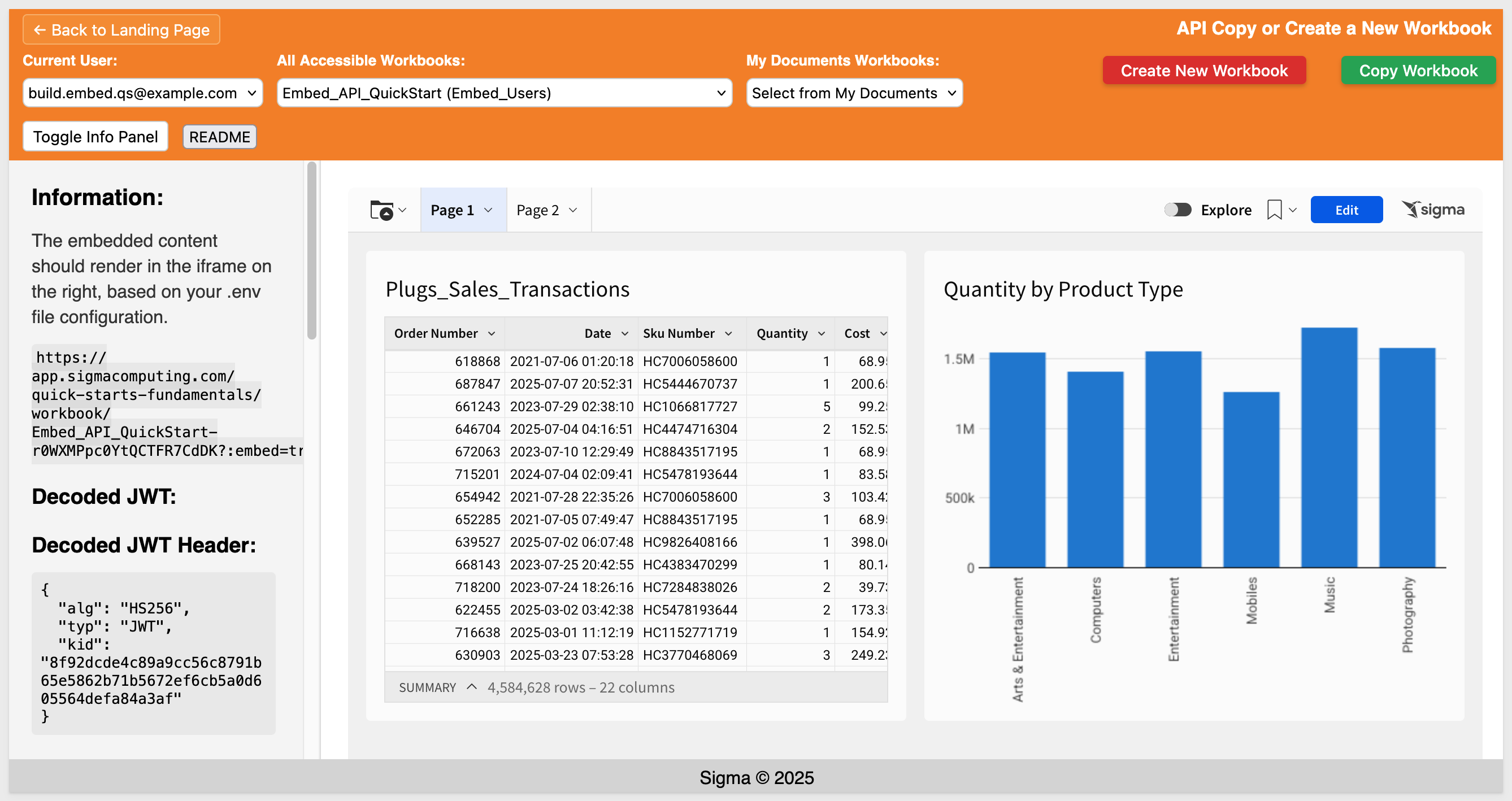

When the page first loads, you'll see two list controls:
- One showing all workbooks the build user has access to
- One displaying those stored in the build user's My Documents folder

Click Create New Workbook to open the modal.
Enter a name, then click Create Workbook:
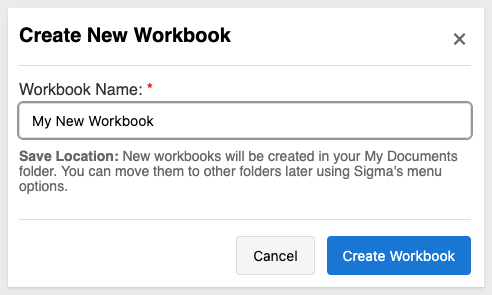
In this implementation, all newly created workbooks are saved to the user's My Documents folder. However, you could easily modify the logic to allow selection other locations.
Once complete, you'll see a confirmation message, Workbook created successfully!.
You can then find the workbook in Sigma under Recent:
By impersonating the build user, you'll also see the workbook under My Documents:
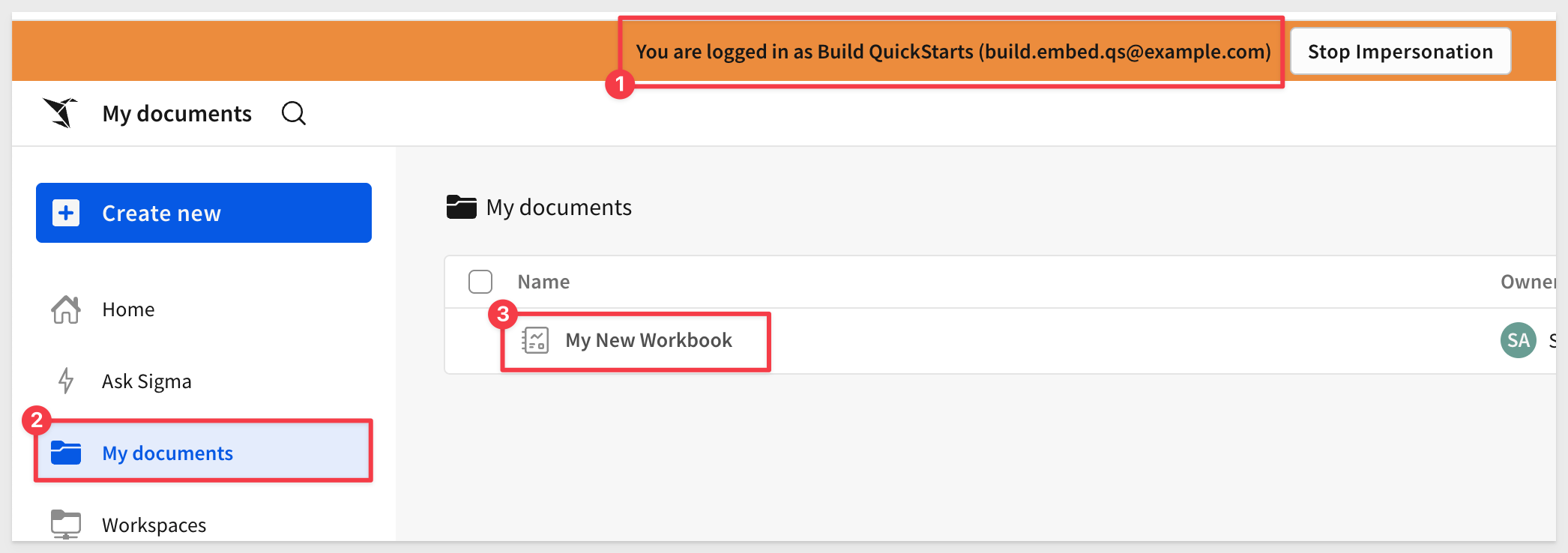
The newly created workbook (though still empty) is preloaded and appears in the My Documents select list as well:

Once a workbook is created, the Copy Workbook button becomes available.
There are many small design decisions behind the Create New Workbook functionality. This example illustrates just one possible approach.
By leveraging the API, you can support a wide range of customized behaviors to fit your organization's needs.

Now that a workbook is loaded, you can click Copy Workbook.
The user can provide a name for the new workbook or leave it blank. If left blank, the name defaults to the original workbook name with (copy) appended.
In this implementation, users can:
- Save the copy to their own
My Documentsfolder - Optionally share it to any
Team Workspacethey are a member of
This behavior was defined at design time, but could be expanded to support other destinations:
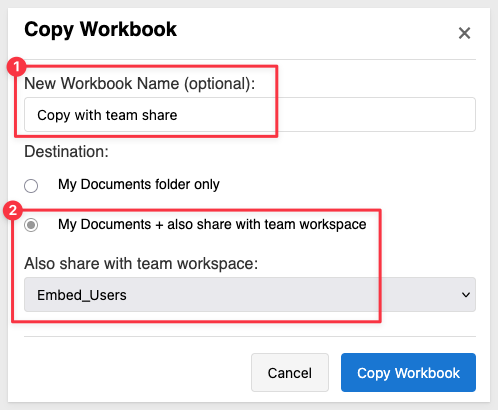
After the copy is complete, a confirmation message appears, Workbook copied successfully!.
The new workbook is then loaded for us.
When impersonating the build user in Sigma, we can confirm that:
- The new workbook appears as expected
- The selected
Team Workspace(if used) has the appropriate access
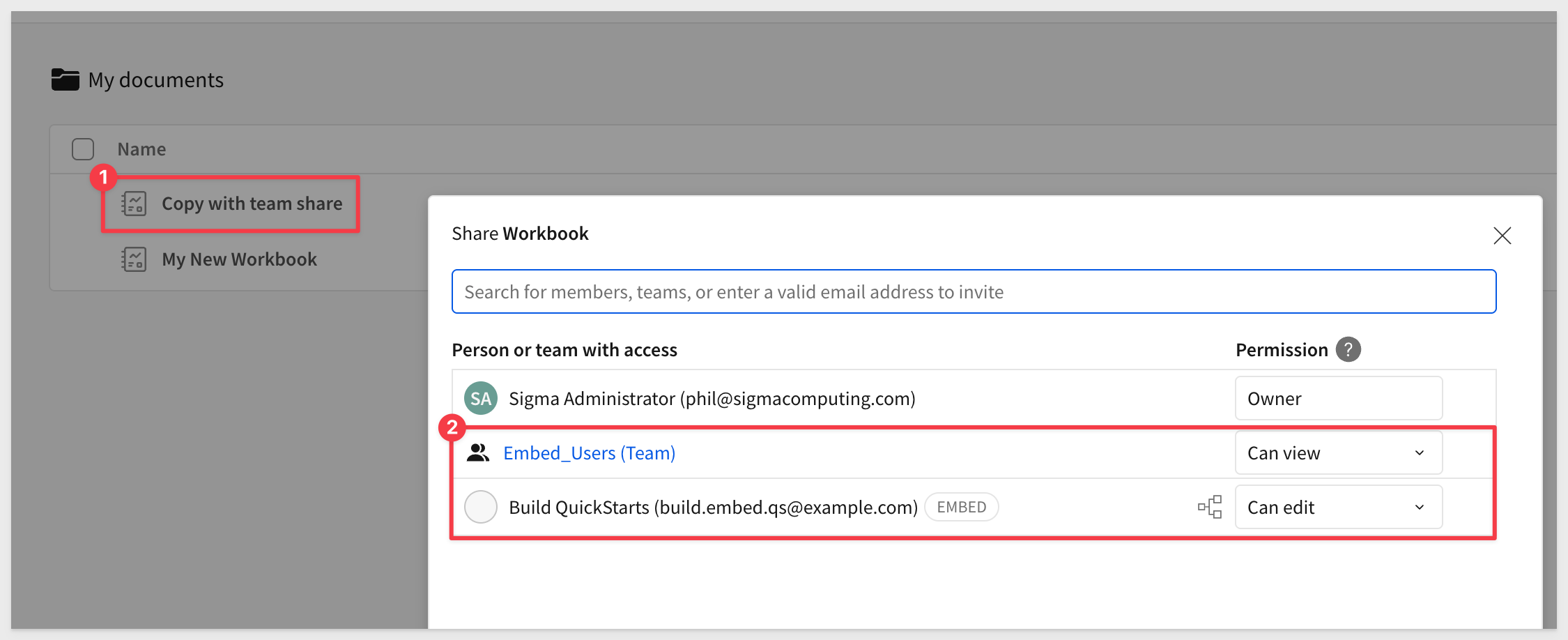
In this example, we hardcoded the team permission to View for simplicity.
This logic is found in the file: routes/api/workbook-copy-create.js, in the following block:
// If this was a team workspace copy, share the workbook with the team
if (teamIdForSharing) {
if (DEBUG) console.log(`Sharing copied workbook with team: ${teamIdForSharing}`);
try {
const grantsUrl = `${process.env.BASE_URL}/workbooks/${data.workbookId}/grants`;
const grantsData = {
grants: [
{
grantee: {
teamId: teamIdForSharing
},
permission: 'view'
}
]
};

In this QuickStart, you learned how to use Sigma's REST API to create and copy workbooks programmatically. We covered:
- Creating a new workbook and storing it in the user's My Documents folder
- Handling naming conflicts automatically during workbook creation
- Copying a workbook with optional team workspace sharing
- Preloading and refreshing workbook lists for immediate access
- Assigning default permissions using API-driven logic
This example demonstrates just one way to design a custom workbook management flow—providing a solid foundation you can extend to fit your specific use case.
Additional Resource Links
Blog
Community
Help Center
QuickStarts
Be sure to check out all the latest developments at Sigma's First Friday Feature page!



